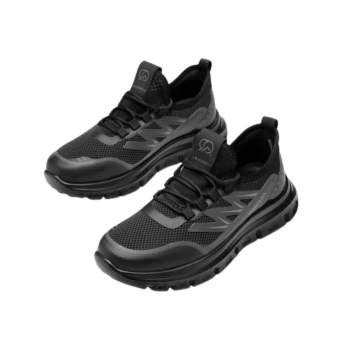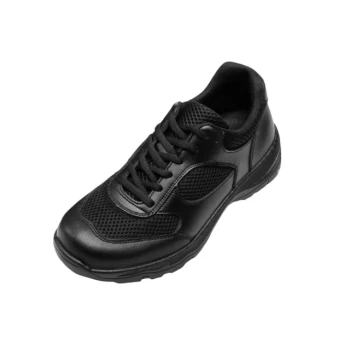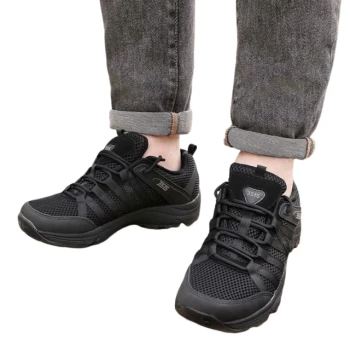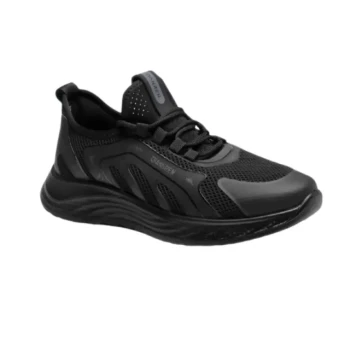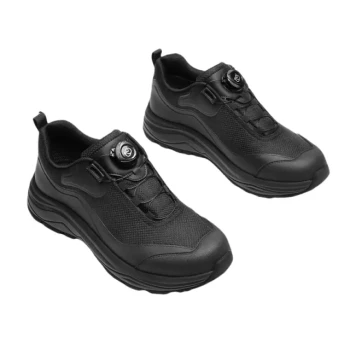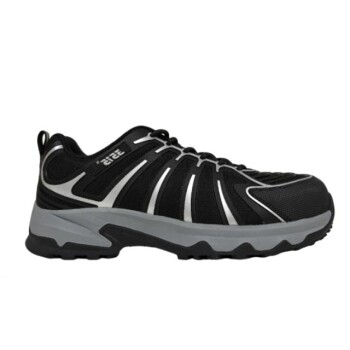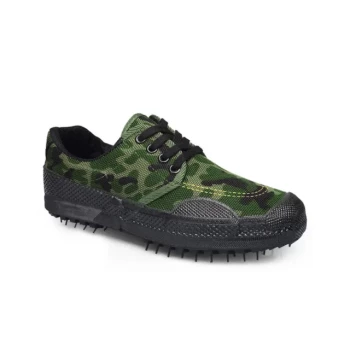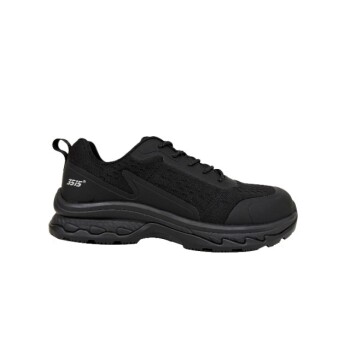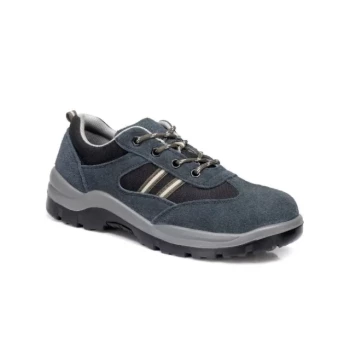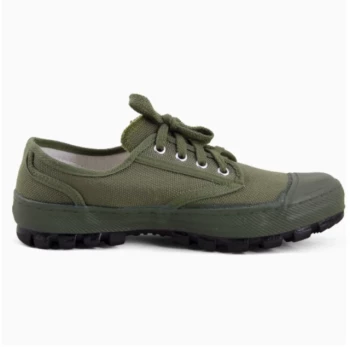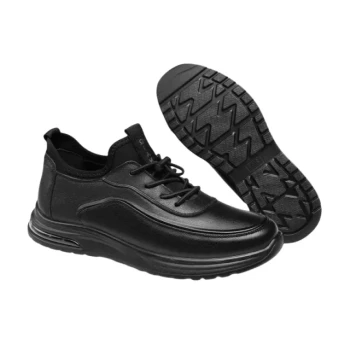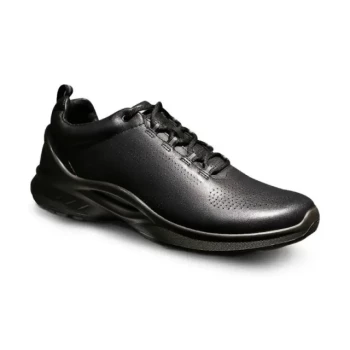At its core, an athletic shoe is specialized equipment for your feet. It is a purpose-built tool designed to manage the unique stresses of sports and physical activity. Its primary functions are to enhance performance, provide comfort, and, most critically, prevent injuries by protecting your body from high-impact forces.
The fundamental difference is this: while any shoe provides a covering, an athletic shoe is engineered for a specific movement. It acts as a critical piece of equipment designed to absorb shock and support your body, not just as simple apparel.
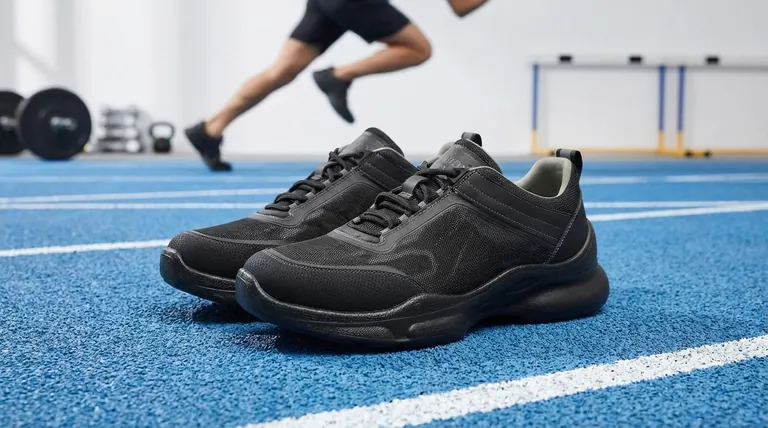
The Core Functions of an Athletic Shoe
Athletic shoes are built on a foundation of three key principles. Each feature is a deliberate choice to serve one or more of these functions, moving the shoe from a simple covering to a piece of performance gear.
Injury Prevention: The Primary Mandate
Sports and vigorous exercise place tremendous pressure on your feet, ankles, and legs. An athletic shoe's most important job is to mitigate the risk of injury from these forces.
It achieves this through superior support and cushioning. This helps absorb the shock of impact and can also help correct common issues like overpronation (when the foot rolls inward), which is a frequent cause of injury.
Performance Enhancement: Gaining an Edge
The right shoe can directly contribute to better performance. This is accomplished through activity-specific design.
For example, a basketball shoe offers high-ankle support for lateral movements, while a running shoe is lightweight and designed for forward motion. Features like grippy outsoles for traction or flexible materials that bend with your foot are all engineered to make movement more efficient and effective.
Sustained Comfort: The Foundation of Activity
Comfort is not just about feel; it's about endurance. Athletic shoes use features like cushioned midsoles and breathable mesh uppers to reduce fatigue and prevent blisters.
This level of comfort is what makes it possible to walk for longer than 30 minutes or engage in extended periods of physical activity without pain, allowing you to focus on the activity itself.
Understanding the Trade-offs
The specialization that makes an athletic shoe effective for one activity often makes it unsuitable for another. Confusing a shoe's style with its function is a common and costly mistake.
Athletic Shoes vs. Safety Shoes
These two categories are built for entirely different types of protection. Athletic shoes protect you from the internal forces generated by your own movement—impact, twisting, and strain.
Safety shoes, in contrast, are a form of Personal Protective Equipment (PPE). They are designed to protect you from external workplace hazards, such as falling objects, sharp edges, chemicals, or electrical shock. They often feature reinforced toe boxes and puncture-resistant soles, which are unnecessary and cumbersome for sports.
The Myth of the "All-in-One" Shoe
Using the wrong type of athletic shoe for a sport can compromise both safety and performance. A running shoe lacks the lateral support needed for tennis, increasing the risk of an ankle sprain. A basketball shoe is too heavy and rigid for effective long-distance running.
Even "athletic work shoes," which borrow comfort elements from sports footwear, are not true athletic shoes. Their primary design serves the workplace with features like protective toes and slip-resistant soles, not the demands of high-impact sport.
Making the Right Choice for Your Goal
Selecting the correct shoe begins with identifying your primary activity. The design must match the demand.
- If your primary focus is a specific sport (running, basketball, tennis): Choose a shoe designed exclusively for that sport's unique movements to maximize performance and prevent injury.
- If your primary focus is long-duration walking or general fitness: Select a dedicated walking or running shoe that prioritizes cushioning and support for repetitive forward motion.
- If your primary focus is all-day comfort in a casual work environment: An athletic work shoe is a suitable hybrid, but do not mistake it for true sports footwear.
Ultimately, choosing the right athletic shoe is a direct investment in your performance, comfort, and long-term physical health.
Summary Table:
| Function | Key Features | Primary Benefit |
|---|---|---|
| Injury Prevention | Superior cushioning, arch support, stability features | Protects joints from high-impact forces, reduces risk of sprains |
| Performance Enhancement | Activity-specific design, grippy outsoles, flexible materials | Improves agility, traction, and efficiency for specific sports |
| Sustained Comfort | Breathable uppers, cushioned midsoles, ergonomic fit | Reduces fatigue and blisters, allows for longer activity periods |
Ready to equip your customers with high-performance athletic footwear?
As a large-scale manufacturer, 3515 produces a comprehensive range of athletic shoes for distributors, brand owners, and bulk clients. Our production capabilities encompass all types of sports and fitness footwear, engineered with the precise support, cushioning, and durability detailed in this article.
Partner with us to:
- Source high-quality, purpose-built athletic footwear.
- Develop custom branded shoes tailored to your market.
- Access reliable bulk manufacturing for consistent supply.
Let's discuss your footwear needs. Contact our team today to get started!
Visual Guide
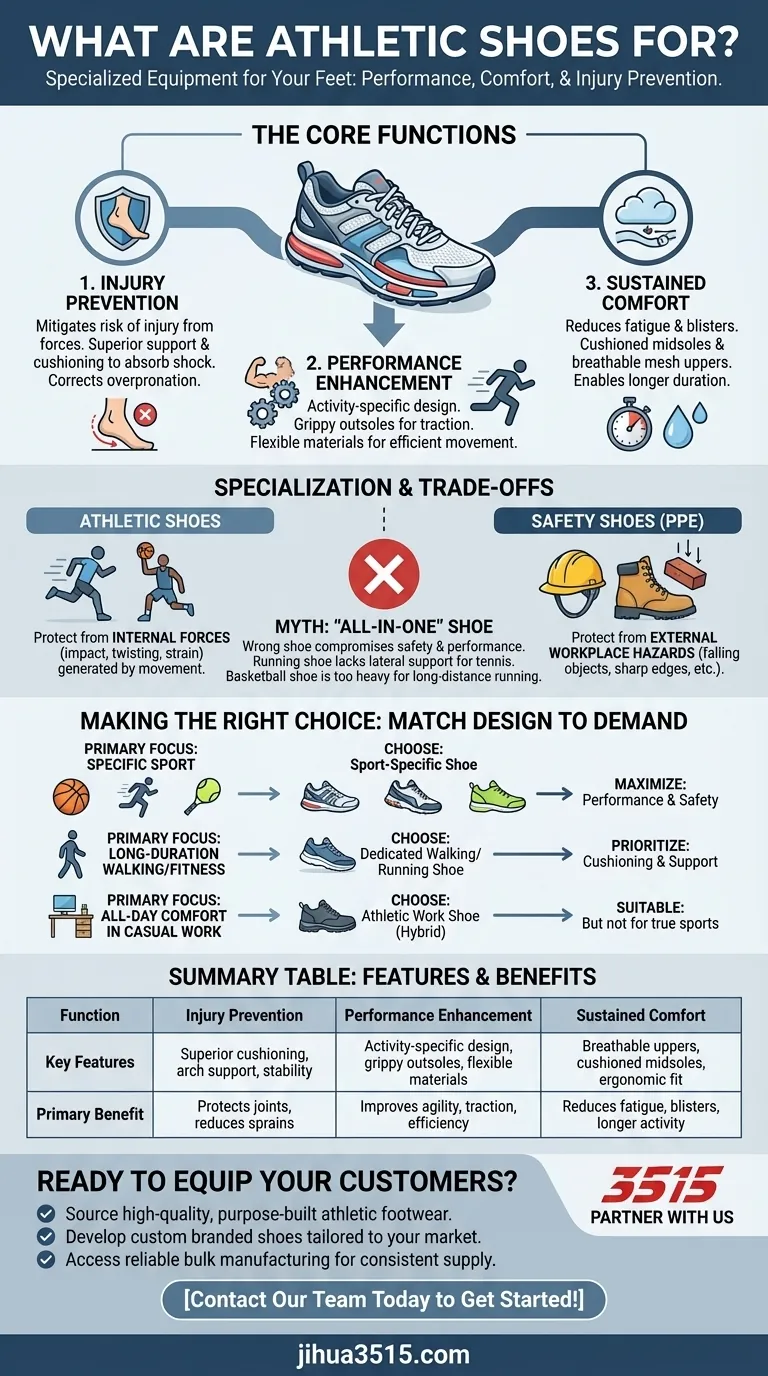
Related Products
- Wholesale Breathable Training Shoes Custom Athletic Footwear Manufacturer
- Wholesale Lightweight Cushioned Athletic Sneakers for Custom Bulk Production
- Wholesale Durable & Breathable Training Shoes for Custom Brands
- Lightweight Breathable Training Shoes for Wholesale & Custom OEM Manufacturing
- Wholesale Breathable & Cushioned Training Shoes Custom Factory Production
People Also Ask
- What materials are best for athletic activities in warm climates? Stay Cool with Moisture-Wicking Fabrics
- How do athletic shoes with non-slip features differ from regular ones? Discover the Grip Advantage
- Why are running shoes and walking shoes not interchangeable? Avoid Injury with the Right Footwear
- Does more ground contact area mean better support? Unlock the Secrets of Stable Footwear
- What are the benefits of breathable mesh in shoe design? Enhance Comfort and Performance

